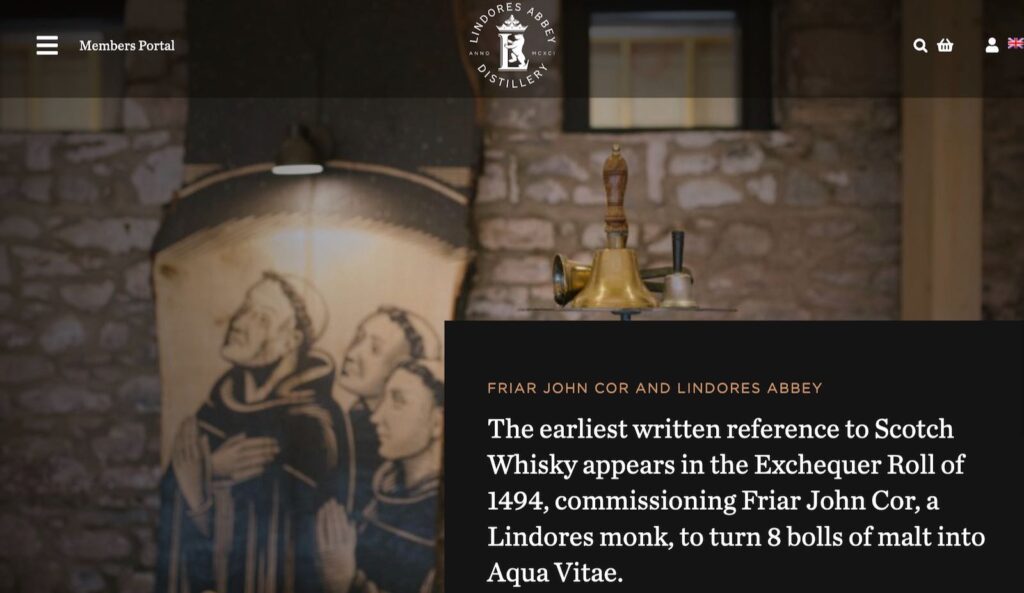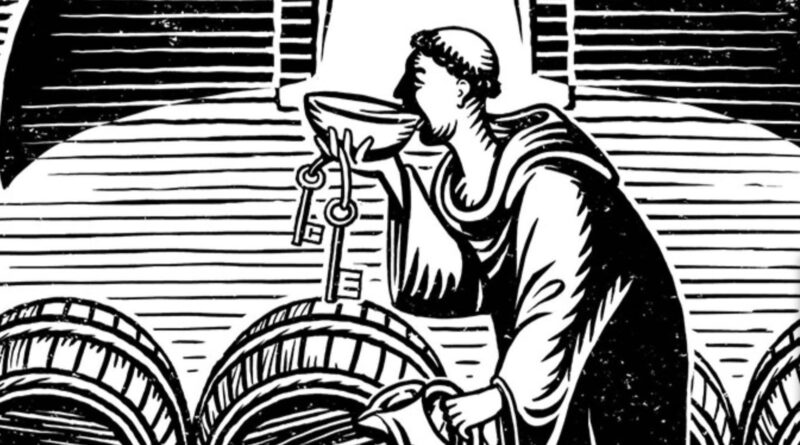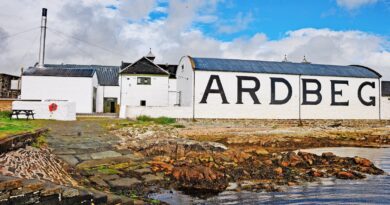Lindores Abbey Distillery
The Blurb
Lindores Abbey is claimed as The Spiritual Home of Scotch Whisky. Lindores Abbey is widely recognised links to the earliest written reference to Scotch Whisky, mean that people have been travelling to this quiet corner of Fife for centuries. After a 500-year break, these whisky pilgrims are now once again able to see Single Malt distillation happening once again on this historic site. In 2017, spirit started flowing once again from copper stills at Lindores Abbey.
The Lindores Abbey Distillery Story
The team at Lindores Abbey Distillery learned as much as they could from the great Scottish distillers around them, past and present, and from others much further afield. Their goal was to bring a very modern whisky-making approach to this ancient site. The distillery was created by converting and enlarging the old Abbey farm steading, which was built from original Abbey stone. The glass-fronted stillroom looks directly out over the Abbey grounds.
Their Whisky
The water for their whisky comes from a borehole near the distillery, referencing a history that it was the same supply of water that was used to create whisky in 1494. The barley is grown on their own land, malted and then mashed in a conventional, semi-lauter tun supplied by renowned distillery fabricators, Forsyths of Rothes.
Fermentation is happening in traditional wooden wash backs, supplied by Joseph Brown of Dufftown. They have three Forsyths copper pot stills, one large wash still and two smaller spirit stills, which allows greater copper contact in the final distillation, creating a clean and delicate flavour in the spirit.
History and Backstory

THE EXCHEQUER ROLL OF 1494 READS
“Et per liberacionem factam fratri Johanni Cor per preceptum compotorum rotulatoris, ut asserit, de mandato domini regis ad faciendum aquavite infra hoc compotum, viii bolle brasii”
Translated from Latin; “And by payment made to Brother John Cor by precept of the comptroller, as he asserts, by the Kings command, to make aquavite within the period of the account, 8 bolls of malt.”
This entry in the Exchequer Rolls is recognised as the first written evidence of the production of Aqua Vitae, or as we call it today, whisky, in Scotland.
Most whisky literature asserts that Brother/Friar John Cor was a Tironensian monk based at Lindores Abbey in Fife, but historians and whisky enthusiasts alike have spent many years trying to unearth how this link was made and when.
After over 20 years of research by Drew McKenzie Smith, we believe we have a weight of evidence to support the common assumption that he was indeed based at Lindores Abbey. The earliest written record that Drew found mentioning John Cor is from a company report in 1950 of Newtons of Bonthrone, who were brewers and distillers dating back to the 16th century from nearby Falkland.
This predates by over forty years the authoritative book “The Scotch Whisky Industry Record” by H Charles Craig in 1994, which begins by repeating the assertion that Friar John Cor was from Lindores Abbey, and this has been repeated in a great many books by leading whisky writers across the world as well as hundreds of whisky websites and blogs.
Drew worked with the National Archives of Scotland, The Special Records Department at St Andrew’s University Library and The National Library of Scotland to compile information that strongly supports the assumption that Friar john Cor was the same person as one John Kawe, Baillie of Newburgh (the small town established around the abbey) and who can be placed at the Abbey of Lindores on a number of occasions over the period (1494/5) in question.
Great Things Ahead
From what we can see, this really is a wonderful team of highly passionate whisky lovers, entrenched in a rich and vivid history of both Scotland and whisky production. We see good things ahead for this team.




